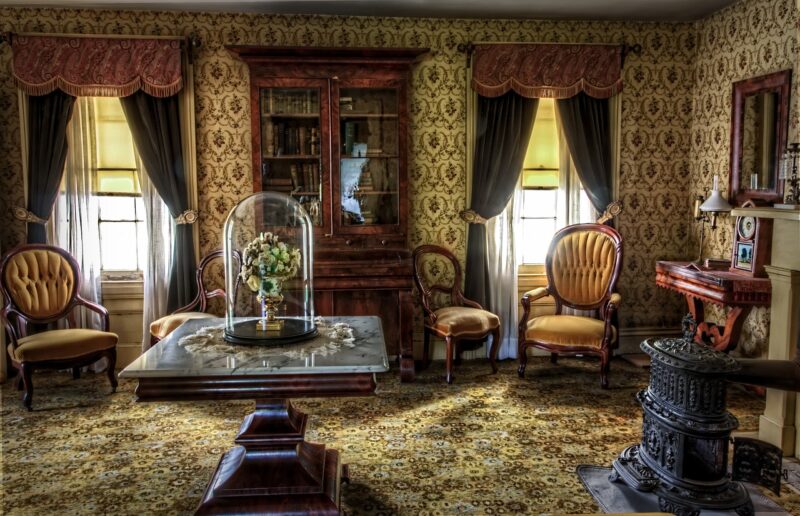How to Restore Old Furniture as a Fun DIY Hobby with an Artistic Touch
November 13, 2024

Restoring old furniture is not just about giving outdated pieces a new lease on life; it’s an exciting DIY hobby that combines creativity, craftsmanship, and sustainability. Whether you have inherited an old chair from your grandmother, stumbled upon a forgotten gem at a garage sale, or simply want to give your home a fresh look, furniture restoration allows you to utilize your artistic flair while saving money and reducing waste. In this article, we will delve into the fascinating world of furniture restoration, covering everything from essential tools and materials to techniques that you can easily apply at home.
1. Why Restore Old Furniture?
Restoring old furniture offers several benefits that extend beyond aesthetics. Here are a few compelling reasons why you should consider this enriching hobby:
Sustainability:* In an age where environmental consciousness is crucial, restoring furniture helps reduce landfill waste while promoting sustainability. Instead of purchasing new items, you can give old pieces a fresh identity.
*Cost-Effective:** Often, restoring furniture can be far cheaper than buying new items. You can find beautiful vintage pieces at thrift stores, garage sales, or even your own attic for a fraction of the cost of new furniture.
Personal Satisfaction:* There’s immense satisfaction that comes with transforming a worn-out piece into something beautiful. Your hard work and creativity will not only enhance your home but also your self-esteem.
Support Local Businesses:* Most restoration projects require a range of materials, from paint to hardware. By sourcing these locally, you can support small businesses in your community.
2. Getting Started: Tools and Materials You Will Need
Before diving into the world of furniture restoration, gather the necessary tools and materials that will make your project a success:
1. Basic Tools:
– Screwdriver (flathead and Phillips)
– Hammer
– Pliers
– Sandpaper (various grits)
– Paintbrushes (different sizes for various applications)
– Rags or old cloths
– Exacto knife or utility knife
2. Key Materials:
– Primer and paint or wood stain (based on your preference)
– Wood glue
– Varnish or topcoat to seal and protect your work
– Upholstery materials (if working with upholstered furniture)
– Decorative hardware (knobs, handles, etc.) as desired
3. Optional Tools:
– Paint sprayer for a smooth finish
– Sander or power sander for larger projects
– Staple gun for reupholstering
– Clamps for holding pieces together while drying
Gathering quality materials is key to achieving professional results. Consider visiting your local hardware store, craft store, or even online marketplaces to find the best options.
3. The Step-by-Step Restoration Process
Now that you have your tools and materials ready, it’s time to get started. Here’s a comprehensive guide to restore old furniture:
Step 1: Choose Your Piece
Select a piece of furniture that speaks to you. Look for items with solid wood, good bones, and character. Remember, the condition doesn’t need to be perfect; it’s all about the potential
Step 2: Clean Thoroughly
Before working on the piece, make sure to clean it thoroughly. Use soap and water to remove dust, grime, and any old wax that may interfere with refinishing. For a deeper clean, consider using a wood cleaner or vinegar solution.
Step 3: Assess Repairs
Examine the piece for any damages. Check for broken legs, loose joints, or scratches. Tighten screws, repair split wood with glue, and replace missing parts, if necessary. These small repairs will ensure that your restored furniture is stable and durable.
Step 4: Sand Down the Surface
Use sandpaper to remove old paint or stain and smooth out rough patches. Be patient with this process, as proper sanding is vital for good paint adhesion. Start with a coarser grit and progress to a finer grit for a smooth surface.
Step 5: Apply Primer and Paint
Priming is crucial, especially if you’re painting over a darker color or dealing with stained wood. It not only helps the paint adhere better but also ensures even color. Once the primer is dry, apply your chosen paint or stain in smooth, even strokes.
Step 6: Protective Coating
After the paint has fully dried, apply a topcoat or varnish to protect your restoration. This layer enhances durability and can give a beautiful sheen to the finish.
Step 7: Reupholster (if necessary)
If your project involves upholstered furniture, remove the old fabric and padding. Cut new upholstery to size and use a staple gun to secure it to the frame.
Step 8: Add Finishing Touches
Consider adding decorative elements such as new knobs, handles, or stencils to give your furniture a unique artistic touch. Custom touches can reflect your style and make the piece truly one-of-a-kind.
Step 9: Enjoy Your New Creation!
Once everything is dry, place your restored furniture in your home and enjoy the satisfaction of your hard work.
4. Tips for Adding an Artistic Touch
Adding an artistic flair to your restoration can help personalize your project. Here are some creative ideas:
Decoupage:* Add decorative paper, fabric, or even maps to surfaces by using a decoupage medium to seal it. This technique is great for table surfaces and drawer fronts.
Stenciling:* Use stencils to create unique patterns or designs on your furniture. Apply them over a freshly painted surface for a stunning effect.
Color Blocking:* Get playful with different colors by color blocking your furniture. Choose contrasting colors to bring out the character of your piece.
Unique Hardware:* Update the hardware, such as knobs or handles, to add a modern touch to a vintage piece. Unique shapes and styles can make your restored furniture stand out.
Ultimately, the artistic touch you apply will reflect your personality and style. Experiment with different techniques and don’t be afraid to think outside the box!
5. Conclusion: Unleash Your Creativity with Furniture Restoration
Restoring old furniture is a rewarding DIY hobby that marries art and functionality. As you restore pieces, you not only recycle and save money, but you also create uniquely crafted works that mirror your creativity. So, gather your tools, pick that old chair or table, and immerse yourself in the art of restoration. Your journey into the world of furniture restoration promises creativity, satisfaction, and a touch of eco-friendliness in your home.





